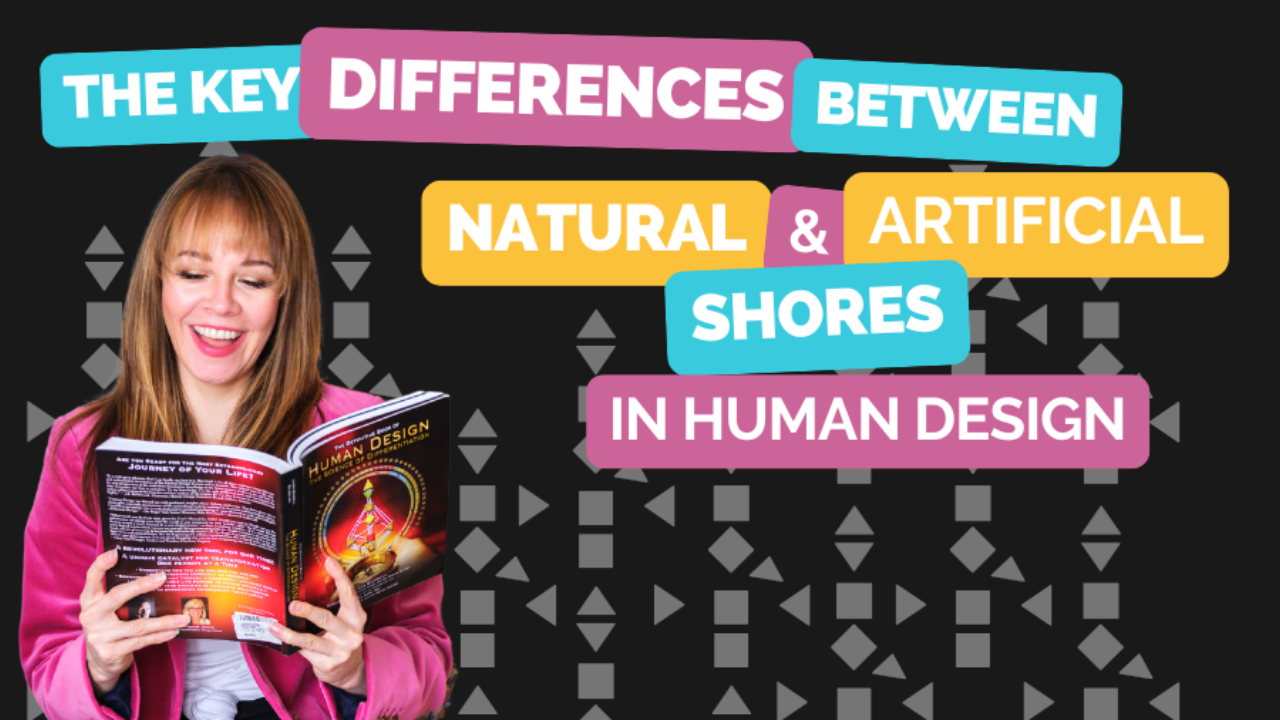
The Key Differences Between Natural and Artificial Shores in Human Design
Mar 25, 2025In Human Design, your environment plays a significant role in how you align with your natural energy and thrive in the world. The Shores environment is all about the interaction between land and water, symbolizing the space where two different energies meet and blend. This environment has two variations: Natural Shores and Artificial Shores. Whether your chart indicates a Natural or Artificial Shores environment depends on how you engage with these meeting points between different elements.
What is the Shores Environment in Human Design?
The Shores environment is where land and water meet, symbolizing the space where boundaries blur and connections are made. This can be taken literally—like being near oceans, lakes, or rivers—or metaphorically, where two different worlds come together. Those who resonate with the Shores environment thrive in spaces where they can interact with different energies, ideas, or people. Whether you're aligned with Natural or Artificial Shores depends on how you interact with this environment.
Advanced Reader Tip: Shores environment is Color 6. Natural Shores are Tones 1-3 and Artificial Shores are Tones 4-6.
Natural Shores: Organic Connections and Flow
If your Environment arrow points left, you are aligned with Natural Shores, which means you thrive in environments that are more organic and naturally formed. Here’s what this looks like:
- Natural and Flowing Spaces: In Natural Shores, you thrive in environments that feel naturally formed and free-flowing. This could be literal, like spending time near the ocean or a river, or it could be more metaphorical, like interacting with people in a setting that feels genuine and uncontrived. You are drawn to places that allow for natural, unstructured connections.
- Connection through Nature: Your energy is most aligned in places where the environment has an organic flow. You might feel more comfortable in natural spaces, where the energy comes from the land and water themselves, rather than being manufactured by human-made structures. Whether it's a beach, forest, or natural reserve, these environments nurture you.
- Active Engagement: With a left-facing arrow, you are more actively engaged in your environment. You seek out spaces where the natural energy of the earth and water supports your energy, allowing you to move and interact fluidly with your surroundings. You are part of the natural flow of energy and thrive in organic settings that help you feel more connected and alive.
Artificial Shores: Structure and Blending of Worlds
In contrast, if your Environment arrow points right, you are aligned with Artificial Shores, which means you thrive in more human-made environments where different elements come together. Here’s how Artificial Shores differ:
- Structured and Blended Spaces: In Artificial Shores, you feel most comfortable in environments that are more structured or man-made. This could be places where human creativity and innovation bring different elements together, such as marinas, urban waterfronts, or indoor spaces where water and land elements are intentionally combined.
- Connection through Design: Unlike Natural Shores, where the energy comes from organic elements, Artificial Shores provide energy through human-made design. You thrive in spaces where different worlds meet—like a city built on water, a rooftop pool, or an engineered park where land and water blend seamlessly.
- Passive Observation: Your right-facing arrow reflects a more passive, observational approach to your environment. You prefer to absorb the energy of your surroundings rather than actively engage with them. Artificial Shores give you the opportunity to observe the blending of different elements, like nature and technology, without needing to be at the forefront of the interaction.
Understanding Active vs. Passive Engagement
The distinction between Natural and Artificial Shores is influenced by how you interact with your environment, reflected in the active (left-facing) or passive (right-facing) nature of your design:
- Active (left-facing) environments, like Natural Shores, are about direct participation. You actively seek out environments where the blending of energies feels organic and natural. These are spaces where you can engage with the environment and feel like a part of its flow.
- Passive (right-facing) environments, like Artificial Shores, are about observation and structure. You are more comfortable in environments where the blending of energies is engineered or structured. You observe the combination of elements like land and water, but you don’t need to engage directly with the flow.
Which One Are You?
You can determine whether you align with Natural or Artificial Shores by looking at your Human Design chart. Focus on the Environment arrow, which is the bottom-left arrow next to the crown center. The direction of this arrow reveals your ideal environment:
- If the Environment arrow is left-facing, you align with Natural Shores. You thrive in organic environments where the blending of land and water happens naturally, and you actively engage with the energy of the space.
- If the Environment arrow is right-facing, you align with Artificial Shores. You prefer human-made environments where land and water meet in structured, designed ways, allowing you to observe and absorb the interaction of elements without needing to be actively involved.
Understanding whether you resonate with Natural or Artificial Shores helps you find environments that best support your energy. Whether you need the active engagement of Natural Shores or the passive observation of Artificial Shores, aligning with your correct environment allows you to experience more balance, peace, and flow in your life.
